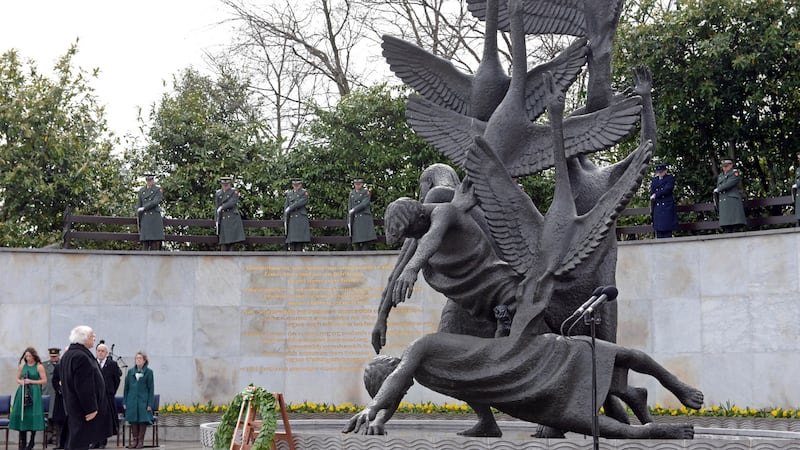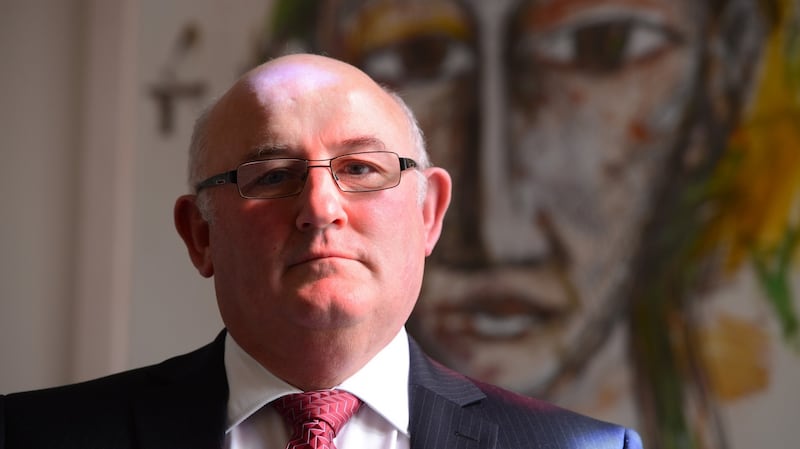"He's being very cagey about it, isn't he?" says one friend of President Michael D Higgins about his intentions for the future.
“I actually asked him straight out was he going to do it. He said he didn’t know. I think he’d like to, but he’s worried about his age, health, and all that. He said maybe somebody younger should do it. I think he wants to do it, but he isn’t sure.”
Higgins is 76, long past the time when most people retire, and even his staunchest supporters acknowledge that he can only be expected to slow down in the coming years. If he runs again, he would be 84 by the time he leaves office. Very few 84-year-olds can put up with the busy schedule that Higgins has managed in recent years. Though not many 76-year-olds can do it either.


Both during the election campaign in 2011 and following his victory, Higgins made it clear that his intention was to serve only one term. In office, that clarity gave way to ambiguity (“My concentration is on doing this term”) and lately to coyness.
At the National Ploughing Championships last month he told RTÉ’s Seán O’Rourke that he would make his intentions clear after the summer of next year.
He knows that this would be too late for any rivals to get into the game. The conventional wisdom in political circles is that he is trying to scare off any challengers. He’s telling them: come and have a go if you think you’re hard enough.
Questions of capacity will inevitably feature in Higgins’s decision. But those who know him also say that he is thinking about a theme for a possible second term. The first thing he must decide is whether he wants another seven years in the Áras. But in a way, that’s the easy bit. The harder bit is deciding why. What would a second Higgins term be for?
Three phases
His first term can be divided into three phases. The first few years of Higgins’s presidency – the period of harshest austerity following the economic crash – were marked by criticism of the economic paradigm that underpinned austerity. If his presidency had a theme, this was it.
He was frequently critical of the European Central Bank. This used to terrify the Fine Gael-Labour government until they realised that Higgins’s revolt was an intellectual rather than a political one.
“It was an awful headache for some of the civil servants, waiting to see what is in Michael D’s speeches,” says one member of that administration. “But we basically understood that whatever he wanted to do, he would do. We didn’t think he would cross the line [into open criticism of government policy]. But there wasn’t much we could do about it anyway.”
He was fiercely independent. “The civil servants would ask us for guidance on how they might influence the President,” recalls another source. “We’d say: ‘Good luck with that.’”
There was also a fair bit of mutual incomprehension and confusion about protocol at times.
Others in that administration say that they relaxed about Higgins when they realised that any criticism of government policy would likely be buried so deep in the middle of dense, sometimes impenetrable speeches – complex, heavy, peppered with references to political thinkers and philosophers – that nobody would notice it. There was a fair bit of private scoffing in government and official circles about Higgins’s “ethics initiative”.
Uncomfortable with austerity
But actually, lots of people did notice something. They noticed that Higgins was uncomfortable with a lot of austerity and they responded to that. “I think a lot of people felt that he was sort of on their side,” recalls a source.
Certainly the public seemed to respond to him. The receptions he received were enthusiastic. His popularity was confirmed and deepened in the second phase of his presidency – the 1916 commemorations that dominated his diary last year. Higgins gave the proceedings depth, perspective, personal feeling and humanity. The public reaction to him intensified from enthusiasm to something near adulation.
This past year is arguably a third phase – quieter, less hectic, more low-key. Even his allies and supporters concede he has slowed down a bit. They point out that this year has come after the intense period of the commemorations last year, but even summer 2017 has seen a lighter diary than 2015.
Still, the schedule is punishing. He will have as many as 40 speaking engagements in upcoming visits to Australia and New Zealand.
In a typical month at home, there’ll be 20 or 30 official engagements, along many informal meetings, dinners and other events.
“You walk into a room in the Áras and you could meet Bono, or Tommy Tiernan, or Yannis Varoufakis [the leftist former Greek finance minister],” says one source familiar with life in the Park.
Áras an Uachtaráin declines to supply details of off-diary meetings. “They’re private,” says the press office. “And the private stuff stays private.”
“But he meets the Taoiseach for dinner once a month or so,” the office adds.
Valuable trait
Higgins has often been underestimated as a politician, and has in abundance the most valuable trait that a politician needs more than any other: people like him.
But a politician needs judgment, too. And, heading for an election, he needs a message.
The momentum towards a presidential election is beginning to gather. Oddly, it is despite the wishes of the two big parties. Both Taoiseach Leo Varadkar and Fianna Fáil leader Micheál Martin have expressed their wish for him to serve a second term.
The two big political parties aren’t really that interested in the presidency. They are interested in hard power, and the presidency is largely a powerless office, at least as they understand it. Fine Gael and Fianna Fáil would be delighted if Michael D glided into a second term unchallenged. But it’s unlikely to happen.
It’s not hard to get a nomination to contest the presidential election. Twenty members of the Oireachtas can get you on the ballot paper. Or, if you can persuade four local authorities to let you into the race, you’re there as well.
And many local authorities are only delighted to demonstrate their relevance and power.
There were seven candidates in the last election, in 2011. In 1997, there were five. Any serious candidate who wants to get a nomination, who organises and fundraises and plans, should be able to get one.
Nomination
In recent weeks, the Independent senator Gerry Craughwell has declared he may seek a nomination. Craughwell is hardly a national figure, but if he does not emerge as an Independent candidate, somebody else will. TD Michael Fitzmaurice has also stuck his hand in the air. There will surely be others. The odds are on more than one Independent candidate making it as far as the ballot paper.
This will most certainly prompt Sinn Féin to run a candidate. And if that happens, it will be very difficult for Fianna Fáil and Fine Gael to stay out. Higgins’s chances of avoiding a contest are slim.
“At the end of the day the most likely thing is there will be a contest with many candidates,” says one senior political source in one of the big parties.
Higgins will almost certainly have to campaign for a second term, and maybe campaign hard. And to do that he will need a purpose, a theme – a reason to be President. Some of those close to him acknowledge that he may be trying to settle on such a theme. Perhaps he might supply some clues in Australia.
“I think he knows well enough he can’t say, ‘I’ll keep doing what I’ve been doing,’” says one person familiar with the workings of the Áras.
“I think what he’s aiming at is a defence of social democracy,” says a long-time friend. “He’s old Labour, he’s a Keynesian, he believes in state intervention, in public services – that’s his political tradition. Those are the public virtues he wants to espouse. I think he should just make it a little clearer.”












